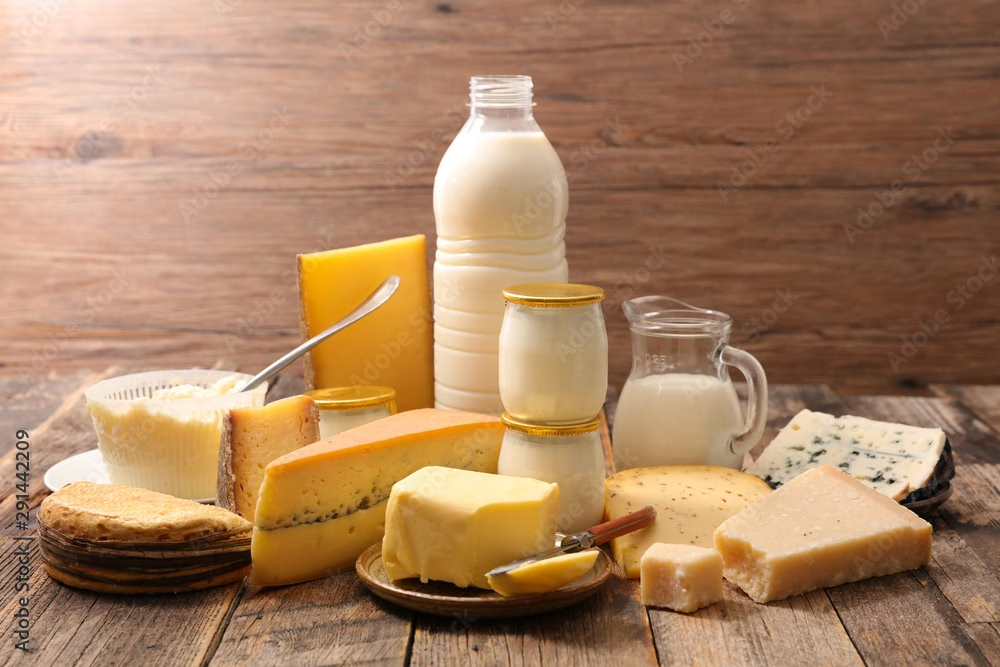Find out why U.S. butter use is the highest in 60 years. How are dairy farmers keeping up with the demand? Learn about the trends changing the butter market.
Summary:
The U.S. butter industry is booming, with consumption and production reaching unprecedented heights in many years. In 2023, each American used an average of 6.5 pounds of butter, the most since 1965. In 2024, this trend continued, with an 11.2% rise in domestic consumption. While overall production increased by 4.4%, California, the top butter-producing state, saw a significant drop due to less milk production and an avian flu outbreak. Other states made up for this drop, leading to a potential record year of output for 2024. However, imports are also up, and butter reserves are decreasing, showing a strong demand. Butter now uses 18% of the U.S. milk supply, highlighting its growing role in the dairy industry. This means new chances and challenges for dairy farmers who need to keep up with herd management and production trends.
Key Takeaways:
- Average U.S. butter consumption reached 6.5 pounds per person in 2023, the highest since 1965.
- U.S. butter production in 2024 could set a new record, exceeding the previous peak of 2.15 billion pounds in 2020.
- California’s butter production declined significantly due to reduced milk production and an avian influenza outbreak.
- Despite high production, U.S. butter imports surged by 27% from 2023, demonstrating robust consumer demand.
- Butter stocks have decreased by 20% from the previous month, nearing historic lows compared to the five-year average.
- Consumer preference for natural dairy fats drives the continued demand for butter, impacting future dairy farming strategies.
- The butter sector now utilizes 18% of the U.S. milk supply on a milkfat equivalent basis, indicating its growing importance in the dairy industry.

On an unexpected rise, American dairy farmers are seeing a significant increase in butter consumption and production, hitting record levels in 2023 and 2024. This trend, with an average consumption of 6.5 pounds per person—the highest since 1965—shows an 11.2% jump in domestic butter consumption in October 2024 alone. Across the U.S., these numbers highlight a renewed consumer desire for butter, setting up for what might be a record-breaking year in U.S. butter production.
| Year | Butter Consumption (Pounds Per Capita) |
|---|---|
| 1965 | 6.0 |
| 2013 | 5.4 |
| 2020 | 5.8 |
| 2023 | 6.5 |
National Butter Production Nears Historic Heights Amidst Regional Struggles
| Year | Production (Billion Pounds) | Percentage Increase from Previous Year |
|---|---|---|
| 2020 | 2.15 | N/A |
| 2021 | 2.20 | 2.3% |
| 2022 | 2.18 | -0.9% |
| 2023 | 2.25 | 3.2% |
| 2024 | 2.20 (Est. through November) | -2.2% |
Butter production in the United States has been rising, with a 4.4% increase to 170.8 million pounds in November 2024. This puts 2024 close to breaking the record for U.S. butter production, which was near 2.20 billion pounds through November.
However, not all areas are the same. California, usually a top butter producer, faced setbacks, with a 12.8% drop in production, making only 45 million pounds in November. This was mainly due to a 9.2% fall in milk production and an avian influenza outbreak, which hurt the state’s ability to produce butter. This caused California’s share of the national butter production to decrease.
Other states have stepped up their butter production by 12.4% to compensate for California’s reduced output. When Pennsylvania is not considered, these states exhibit a growth rate of 13.1%, demonstrating their resilience and capacity to meet the nation’s butter requirements despite regional challenges.
Market Dynamics: Rising Imports and Declining Stocks Suggest Elevated Demand
| Year | Butter Imports (Million Pounds) | Percentage Increase from Previous Year |
|---|---|---|
| 2021 | 130.5 | – |
| 2022 | 160.7 | 23.1% |
| 2023 | 174.9 | 8.9% |
| 2024 (Jan-Nov) | 204.4 | 16.8% |
Butter imports have risen even with high domestic production. Domestic producers struggle to meet the increased demand for holiday baking and cooking in the fall and winter. On top of that, international trade impacts imports. Changes in global dairy prices and trade agreements influence the decision to import butter as countries offer competitive prices to the U.S. This shows a complex situation where demand and global factors lead to more butter imports.
At the same time, a 20% drop in butter stocks over the past month highlights another vital market trend. This significant decrease in inventory shows strong consumer demand that outpaces the available supply. The low stock levels are nearly 54 million pounds below the five-year average, demonstrating how intense and ongoing this consumption boom is.
High imports and declining stocks point to a market with robust demand. Consumers’ fondness for butter remains strong, even in the face of higher prices. For farmers and industry professionals, this presents a promising future. The high demand could stimulate the development of new production capacity and innovative marketing strategies to retain and attract new market segments.
Analyzing the U.S. Butter Market: Trends, Production Dynamics, and Opportunities for Growth
The U.S. butter market is growing fast, showing significant trends and effects for the dairy industry. Let’s look at the main points:
- Americans are eating more butter than ever. Per person, butter use hit 6.5 pounds in 2023, the most since 1965. In October 2024, butter use increased by 11.2% to 217.4 million pounds. This shows that people like natural dairy fats, even with higher prices.
- Butter production in the U.S. is also increasing. In November 2024, production reached 170.8 million pounds, or 4.4% more than the year before. By November 2024, total production was an impressive 2.20 billion pounds, aiming for a record year.
- Despite making a lot of butter, the U.S. imported a record amount. From January to November 2024, it imported 204.4 million pounds, 27% more than in 2023 and 56.7% more than in 2021.
- Butter stocks are lower than they were in November. They were 214 million pounds, down 20 percent from the previous month and 54 million pounds below the five-year average.
The U.S. butter market is not just growing, it’s thriving. With record production, more imports, and high consumer demand, the industry is ripe with opportunities for dairy farmers to improve their market position. This growth trajectory paints a promising picture for the future of the butter industry, instilling a sense of optimism among industry professionals and stakeholders.
Industry Impact: The Growing Significance of Butter in Dairy Supply Chains
The growing butter market now uses 18% of the U.S. milk supply, showing its significant role in the dairy industry. This high demand for butter presents challenges and opportunities for dairy farmers. Farmers must consider changing how they manage their herds and choosing breeding methods focusing on milk with more butterfat to produce more butter.
Consumers’ preference for natural dairy fats over processed ones is a significant driver of the butter industry’s growth. This trend empowers dairy farmers to align their herd care and milk quality with consumer preferences. As more people opt for butter, farmers can consider breeds better at producing milk with high butterfat, shaping the industry to meet current demand.
With strong consumer demand, dairy farmers can make more butter. This can be profitable but also challenging. Strategies like improving how dairy plants run, enhancing feed quality, and using better milking techniques will be key to growing production.
For farmers, it’s a time of change. There’s a push to produce the most without sacrificing quality, which might mean investing in new technology and facilities. As the industry changes, matching herd management strategies with consumer preferences meets current demand. It helps ensure long-term success and sustainability in the butter market.
Future Projections: Innovations and Expert Insights Shaping the Butter Industry
Experts in the dairy field think that butter production and demand will continue to rise. This is due to new milking technologies and improved herd management. Automated milking systems and data tools are helping farmers produce more and better-quality milk, which meets the rising consumer demand for butter. Dr. Emily Howard, an agricultural economist, says, “Technological changes are reshaping dairy operations, allowing farmers to boost efficiency and meet growing butter market demand.”
These new tools let producers make more milk, which leads to more butter. Farmers can increase their output while following environmental rules using eco-friendly practices like careful farming and eco-friendly feed options. This shift towards tech-driven and sustainable farming might create new opportunities for dairy farmers and lead to more growth in the butter industry.
Automated systems help improve efficiency and production, while data-driven methods enhance milk quality. Careful farming supports eco-friendly practices. As these technologies become more widespread, the U.S. dairy industry is expected to improve its position in the global butter market, creating a more substantial production base. Analysts think these advancements might also reduce production costs, making U.S. butter more locally and worldwide competitive.
The Bottom Line
As butter consumption in the U.S. reaches its highest levels in almost sixty years, the industry has a big chance to grow. In 2023, people ate an average of 6.5 pounds of butter each, expected to rise in 2024. This ever-increasing demand makes the market stronger. It allows American farmers and butter makers to earn more money and expand their market. They can improve production and increase exports by using advanced methods to produce more milk. This growth can continue by focusing on butter’s great taste and health benefits. A steady milk supply supports this growth and keeps the U.S. butter market strong at home and abroad.
Learn more:
- Surging Demand for Butterfat: Revealing the Key Drivers Behind the U.S. Dairy Boom
- How Cheese Exports and China’s Demand are Powering the US Dairy Economy in 2024
- US Milk Production Declines for 11th Month While Butterfat and Protein Rise
 Join the Revolution!
Join the Revolution!
Bullvine Daily is your essential e-zine for staying ahead in the dairy industry. With over 30,000 subscribers, we bring you the week’s top news, helping you manage tasks efficiently. Stay informed about milk production, tech adoption, and more, so you can concentrate on your dairy operations.







 Join the Revolution!
Join the Revolution!





